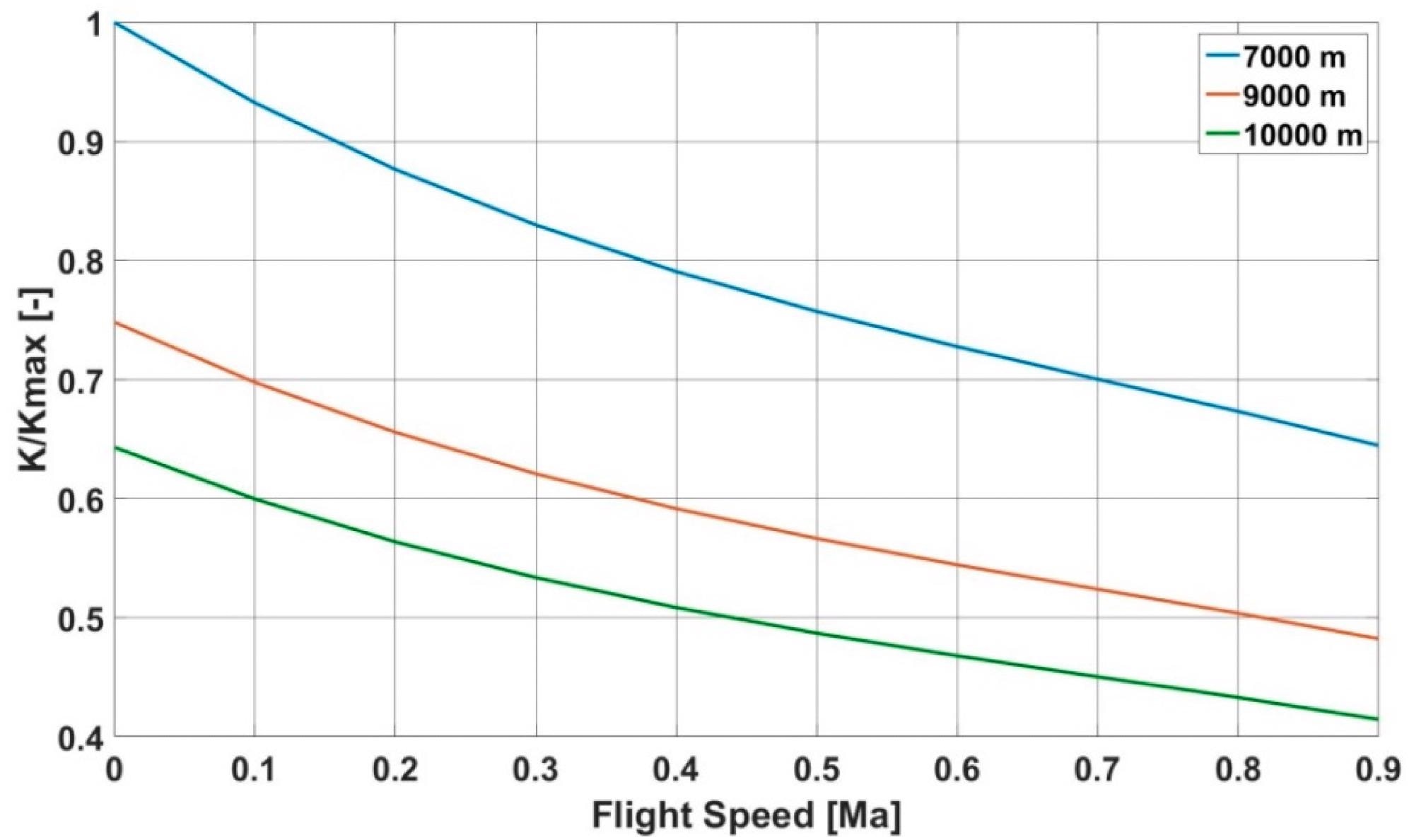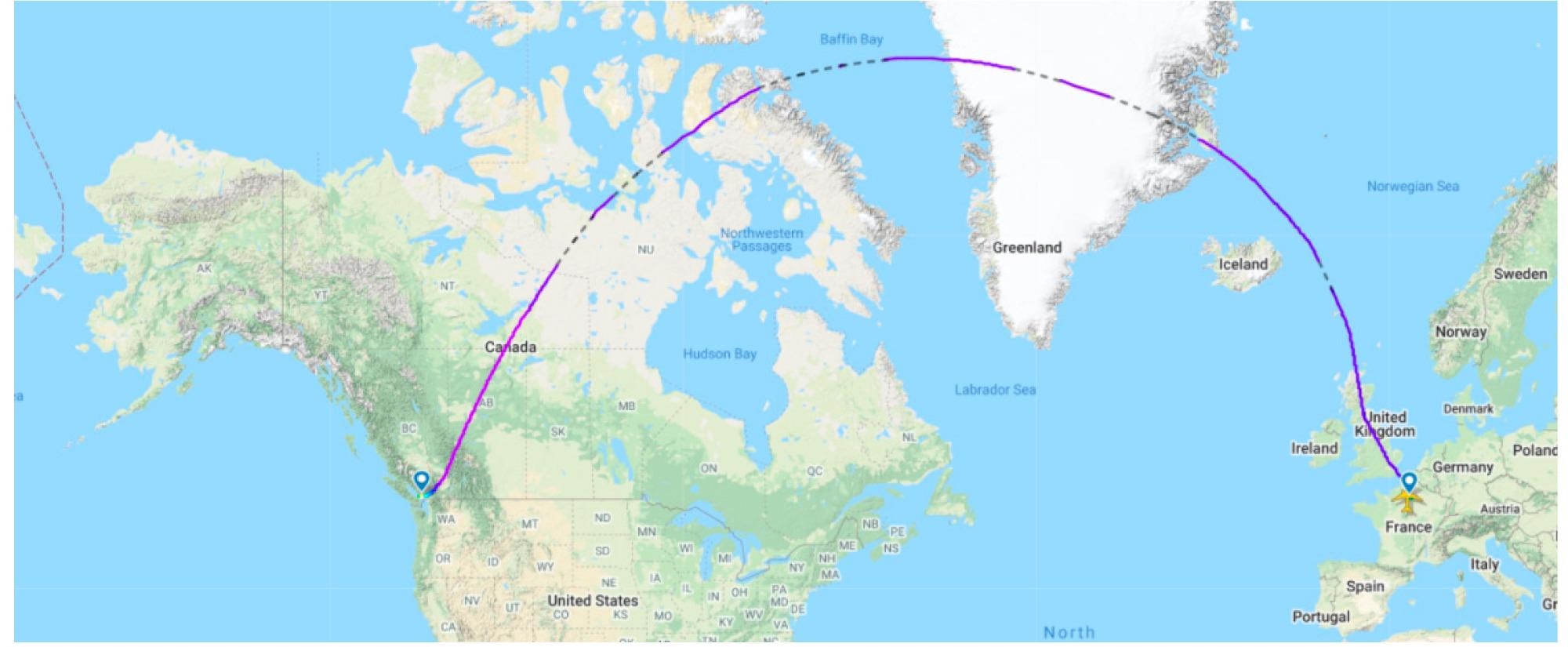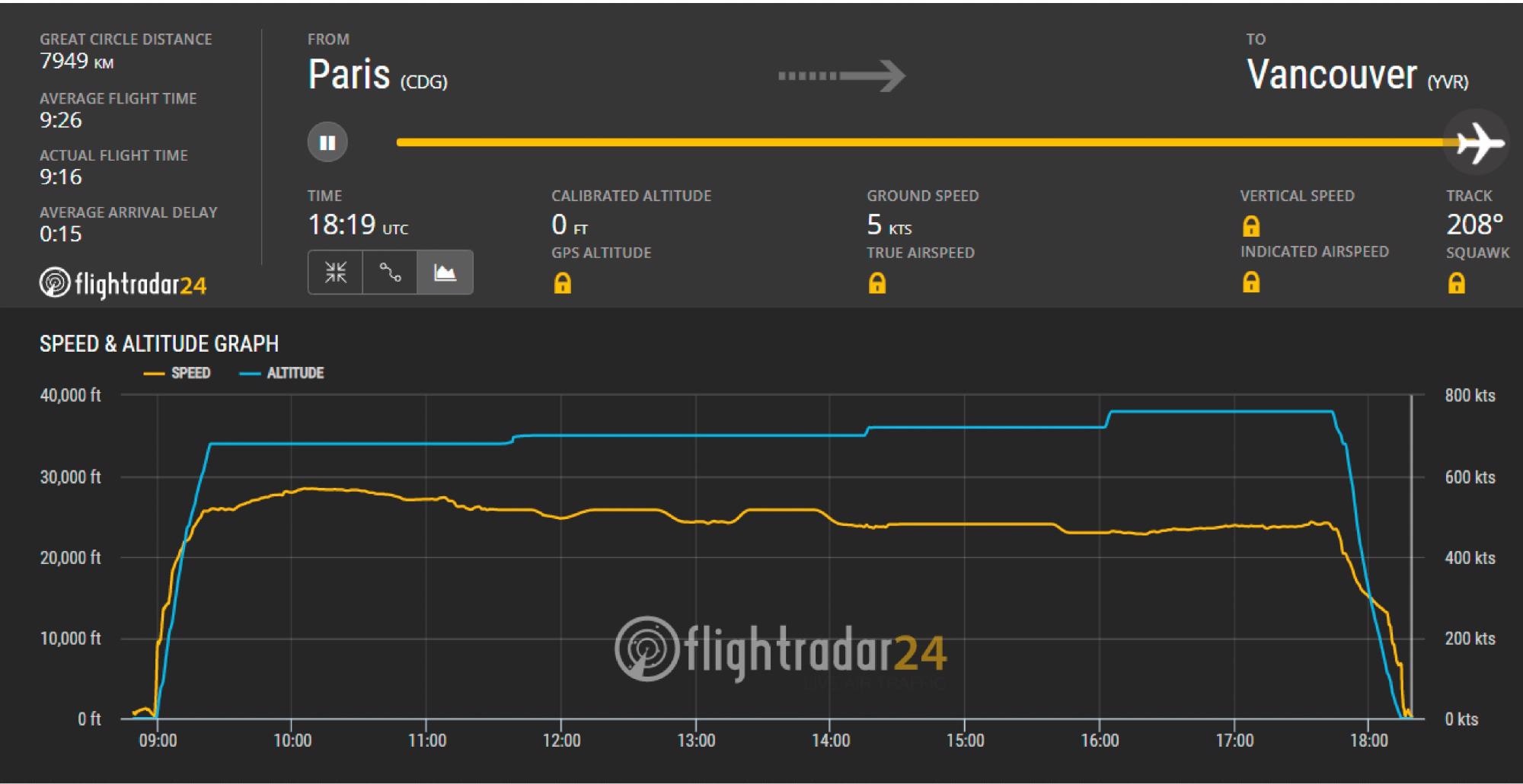Many strategies and solutions have been developed to enforce sustainable development in aviation and to limit the negative impact on the environment. This article looks at recent research exploring the use of biofuels to reduce the impact of aircraft emissions.

Image Credit: Aerial-motion/Shutterstock.com
The adoption by the International Civil Aviation Organization (ICAO) of standards for aviation emissions of NOx, CO2, PM, and nvPM, and the formation of a new CO2 Compensation and Reduction System for International Aviation (CORSIA), are among the most significant legislative measures enacted during the 1990s, whose main goal has been to maintain a net-zero increase in CO2 emissions in civil international aviation since 2021, in comparison to emissions from 2019–2020.
Declarations of sustainable aviation development, stressing economic, social, and environmental accountability, are among the European Union’s most important endeavors in this sector. The key objectives are to improve fuel economy, stabilize CO2 emissions in the aviation industry (carbon-neutral growth), cut CO2 emissions in aviation by half by 2050 (relative to 2005), reduce the carbon footprint of freight air transportation, and produce biojet fuels.
The use of hydrogen as a fuel or as admixtures to hydrocarbon fuels, in particular, appears to be interesting in terms of enhancing the fuel’s heating value while lowering CO2 emissions. Studies on the usage of fuels created from marine algae or jatropha are the most promising in terms of bio-derived fuels.
Algae are extremely efficient in producing biomass. An efficient algae biofuel production system needs a variety of resources, including suitable land and climate, long-term water resource management, extra carbon dioxide (CO2), and other nutrients (e.g., phosphorus and nitrogen). Algae may be an appealing feedstock in a variety of situations because of their diversity, which allows for high potential biomass production in a variety of climates and environments.
The hydroprocessing of Jatropha curcas yields another interesting alternative to conventional jet fuel. Because of its quick growth ability, high energy content, and resistance to harsh temperatures and poor soil conditions, this plant is regarded as a viable source for supplying a large amount of future jet biofuel production.
The lifetime GHG emissions of jatropha jet biofuel (JBF) range from 22 to 54 (gCO2e/MJ), representing a decrease of up to 75% compared to Jet-A. JBF from Jatropha reduces GHG emissions more than palm oil and less than algae while remaining comparable to rapeseed, soybean, and salicornia feedstocks.
The main issue for the jatropha JBF sector is to bring production costs down to a level that is competitive with traditional Jet-A while maintaining a high and consistent crop yield.
The aim of the research presented in this paper is to see if plant-derived fuels may minimize pollutant emissions in the exhaust.
Methodology
Lower heating values (LHV) and emission indices (EI) of specific pollutants contained in the exhausts are among the metrics of fuels derived from algae and jatropha.
Table 1 shows the LHVs of alternative fuels in comparison to the LHV of kerosene (JetA1), as well as the densities of different fuels.
Table 1. The lower heating values (LHVs) and density of fuels. Source: Pawlak and Kuźniar, 2022
| Fuel Type |
LHV [MJ/kg] |
Density [kg/m3] |
| JetA1 |
42.9 |
775 |
| jatropha |
39.5 |
839 |
| algae |
38.2 |
842 |
The Airbus A340-200 airplane was used as the study’s research object. Four Snecma CFM56-5C engines are installed on the aircraft. The essential geometry data of the aircraft is shown in Table 2.
Table 2. Basic technical data of the Airbus A340-200 aircraft. Source: Pawlak and Kuźniar, 2022
| Seating Capacity |
Length
[m] |
Wingspan
[m] |
Engines Type |
Thrust
[kN] |
MTOW
[kg] |
Maximum Payload
[kg] |
Fuel Mass
[kg] |
Aircraft Range
[km] |
Maximum Speed
[km/h] |
| 210–250 |
59.39 |
60.3 |
4× Snecma CFM56-5C |
4 × 140 |
207,000 |
51,000 |
110,400 |
12,400 |
914 |
The Airbus A340 aircraft is seen in Figure 1.

Figure 1. The Airbus A340 aircraft. Image Credit: Pawlak and Kuźniar, 2022
Figure 2 depicts the CFM56-5C engine’s dimensionless performance characteristics, which were computed by the authors in earlier works, and the technique of finding the characteristics was confirmed on the WESTT CS/BV test bench. It describes the connection between its thrust and flying speed at a particular height.

Figure 2. The speed-altitude characteristics of the Snecma CFM56-5C engine. Image Credit: Pawlak and Kuźniar, 2022
Results
The change in fuel consumption by the engine may be calculated using the formulae (1–3) and the LHVs from Table 1 for various fuels. Table 3 displays the outcomes of these computations.
Table 3. Change in fuel consumption when using different fuels. Source: Pawlak and Kuźniar, 2022
| Fuel Type |
Ch [kg/s] |
Ch [kg/h] |
| JetA1 |
0.30 |
1095.45 |
| jatropha |
0.33 |
1189.74 |
| algae |
0.34 |
1230.23 |
The route between Paris and Vancouver was chosen for the analysis for the reasons stated in the introduction. The flight path and profile are depicted in Figure 3.

Figure 3. The flight route between Paris and Vancouver adopted for the research. Image Credit: Pawlak and Kuźniar, 2022
The cruising phase was estimated to last 9 hours and 36 minutes based on data obtained from the FlightRadar24 platform. Figure 4 depicts the flight trajectory’s essential characteristics.

Figure 4. The flight trajectory parameters between Paris and Vancouver airports. Image Credit: Pawlak and Kuźniar, 2022
Table 4 shows the EI values for kerosene and the two plant-derived fuels used in the computations.
Table 4. The emission indices for kerosene and two biofuels. Source: Pawlak and Kuźniar, 2022
| Fuel Type |
EICO2 [kg/kg] |
EINOx [kg/kg] |
EIHC [kg/kg] |
EICO [kg/kg] |
| JetA1 |
3.155 |
0.016 |
1.49 × 10−4 |
0.003 |
| jatropha |
2.672 |
0.013 |
4.17 × 10−6 |
0.006 |
| algae |
2.672 |
0.008 |
9.17 × 10−5 |
0.001 |
Tables 5 and 6 illustrate the emissions of the major pollutants found in exhausts, as well as the amount of gasoline consumed, during the journey from Paris to Vancouver. These figures were based on the emissions and fuel consumption of kerosene, a common aviation fuel.
Table 5. Total emissions and fuel consumption on the route from Paris to Vancouver (cruise phase). Source: Pawlak and Kuźniar, 2022
| Fuel Type |
ECO2 [kg] |
ENOx [kg] |
EHC [kg] |
ECO [kg] |
Ct [kg] |
| JetA1 |
130,411.60 |
661.36 |
6.16 |
115.74 |
41,334.89 |
| algae |
122,791.80 |
367.58 |
4.21 |
58.97 |
45,946.92 |
| Difference [kg] |
7619.79 |
293.78 |
1.95 |
56.77 |
−4612.03 |
| Difference [%] |
5.84 |
44.42 |
31.60 |
49.05 |
−11.16 |
Table 6. Total emissions and fuel consumption on the route from Paris to Vancouver (cruise phase). Source: Pawlak and Kuźniar, 2022
| Fuel Type |
ECO2 [kg] |
ENOx [kg] |
EHC [kg] |
ECO [kg] |
Ct [kg] |
| JetA1 |
130,411.58 |
661.36 |
6.16 |
115.74 |
41,334.89 |
| jatropha |
118,750.53 |
558.61 |
0.19 |
267.98 |
44,434.74 |
| Difference [kg] |
11,661.04 |
102.75 |
5.97 |
−152.24 |
−3099.85 |
| Difference [%] |
8.94 |
15.54 |
96.99 |
−131.54 |
−7.50 |
Conclusion
The analyses were carried out to see if using certain alternative bio-derived fuels may result in a significant decrease in emissions during the cruise phase of the aircraft. These initiatives are in accordance with current aviation research trends.
The reference of the observed emission indices (EI) of the CFM56-5C engine to the cruising range with the use of alternative fuels is the originality of the research done, compared to the published.
The research was based on the Airbus A340-200 aircraft, which was equipped with four Snecma CFM56-5C engines and flew between Paris and Vancouver airports. The aircraft’s cruising phase was estimated to last 9 hours and 36 minutes, and the following operational characteristics were used to describe it: Ma = 0.8; H = 10,000 m.
The largest mass variations in CO2 emissions (from 7.6 to 11.7 tons) were found in the case of changes in CO2 emissions, which is a significant figure considering that the acquired data are reported for only one case study (a particular aircraft and a particular route).
The research given in this article suggests that using biofuels, such as algae and jatropha, can enhance the aircraft’s environmental performance. However, over the cruising range, the reduction in CO2 and NOx emissions is offset by an increase in fuel consumption. The usage of the assessed biofuels necessitates the addition of 4.6 tons of algae fuel and 3 tons of jatropha fuel to the mix.
Laboratory testing of alternative fuels and their blends with kerosene or hydrogen to achieve the same heating value as kerosene should be the focus of future studies. Furthermore, testing should be carried out on a test bench.
Journal Reference:
Pawlak, M. and Kuźniar, M. (2022) The Effects of the Use of Algae and Jatropha Biofuels on Aircraft Engine Exhaust Emissions in Cruise Phase. Sustainability, 14(11), p.6488. Available Online: https://www.mdpi.com/2071-1050/14/11/6488/htm.
References and Further Reading
- Nava, C. R., et al. (2018) The impact of the EU-ETS on the aviation sector: Competitive effects of abatement efforts by airlines. Transportation Research Part A: Policy and Practice, 113, pp. 20–34. doi.org/10.1016/j.tra.2018.03.032.
- Tyner, W E (2012) Policy Update: Biofuels: The future is in the air. Biofuels, 3(5), pp. 519–520. doi.org/10.4155/bfs.12.45.
- Lee, D. S., et al. (2009) Aviation and global climate change in the 21st century. Atmospheric Environment, 43(22–23), 3520–3537. doi.org/10.1016/j.atmosenv.2009.04.024.
- 2016 Environmental Report. (2016) In: ICAO: Environmental Protection. Available at: https://www.icao.int/environmental-protection/Pages/ENV2016.aspx.
- Aviation and the Global Atmosphere. (1999) In: A Special Report of the Intergovernmental Panel on Climate Change. Available at: https://archive.ipcc.ch/ipccreports/sres/aviation/index.php?idp=0.
- Kim, B. Y., et al. (2007) System for Assessing Aviation’s Global Emissions (SAGE). Part 1: Model Description and Inventory Results. Transportation Research Part D: Transport and Environment, 12(5), pp. 325–346. doi.org/10.1016/j.trd.2007.03.007.
- European Aviation in 2040—Challenges of Growth. (2018) In: EUROCONTROL. Available at: www.eurocontrol.int/sites/default/files/content/documents/official-documents/reports/challenges-of-growth-2018.pdf).
- Aviation Outlook 2050. (2022) In: EUROCONTROL. Main Report, April 2022. Available at: https://www.eurocontrol.int/publication/eurocontrol-aviation-outlook-2050
- 2019 Environmental Report. (2019) In: ICAO: Environmental Protection. Available at: https://www.icao.int/environmental-protection/pages/envrep2019.aspx.
- Reducing Emissions from Aviation. (2021) European Commission. Available at: https://ec.europa.eu/clima/eu-action/transport-emissions/reducing-emissions-aviation_en
- The European Commission presents a new Aviation Strategy for Europe. (2015) In: EASA. Available at: https://www.easa.europa.eu/newsroom-and-events/news/european-commission-presents-new-aviation-strategy-europe (
- The Journey towards Zero Emission Aviation (2019) In: EASA. Available at: https://www.easa.europa.eu/light/environment
- Orkisz, M & Kuźniar, M (2020) 3E—Anew paradigm for the development of civil aviation. Combustion Engines, 181(2), pp. 3–10. doi.org/10.19206/CE-2020-201.
- Doff-Sotta, M.; Cannon, M.; Bacic, M. Optimal energy management for hybrid electric aircraft. IFAC-PapersOnLine, 53(2), pp. 6043–6049. doi.org/10.1016/j.ifacol.2020.12.1672.
- Donateo, T & Spedicanto, L (2017) Fuel Economy of Hybrid Electric Flight. Applied Energy, 206, pp. 723–738. doi.org/10.1016/j.apenergy.2017.08.229
- Pawlak, M., et al. (2020) Determination of the flight trajectory in terms of emission and fuel consumption minimization. Proceedings of the Institution of Mechanical Engineers, Part G: Journal of Aerospace Engineering, 236(2), pp. 341–351. doi.org/10.1177%2F09544100211012265.
- Jakubowski, R (2019) Study of bypass ratio increasing possibility for turbofan engine and turbofan with inter turbine. Journal of KONES, 26, pp. 61–68. doi.org/10.2478/kones-2019-0033.
- Andoga, R., et al. (2021) The Use of Ethanol as an Alternative Fuel for Small Turbojet Engines. Sustainability, 13(5), p. 2541. doi.org/10.3390/su13052541.
- Hassan, T. H., et al. (2021) Factors Affecting the Rate of Fuel Consumption in Aircrafts. Sustainability, 13(14), p. 8066. doi.org/10.3390/su13148066.
- Oliviera, J & Brójo, F (2017) Simulation of the Combustion of Bio-Derived Fuels in a CFM56-3 Combustor. 2017. In: 2017 2nd International Conference Sustainable and Renewable Energy Engineering (ICSREE), Hiroshima, Japan, 10–12. doi.org/10.1109/ICSREE.2017.7951502.
- Czarnigowski, J & Jakliński, P (2020) An experimental investigation of the impact of added HHO gas on automotive emissions under idle conditions. International Journal of Hydrogen Energy, 45(23), pp. 13119–13128. doi.org/10.1016/j.ijhydene.2020.02.225.
- Yusaf, T., et al. (2022) Sustainable Aviation—Hydrogen Is the Future. Sustainability, 14(1), p. 548. doi.org/10.3390/su14010548.
- 2016 Billion-Ton Report – Algae Resources (2016) In: U.S. Department of Energy, Energy Efficiency & Renewable Energy. Available at: https://www.energy.gov/sites/prod/files/2016/07/f33/algae_research_factsheet_bt16.pdf.
- Sudhakar, M P & Viswanaathan, S (2019) Algae as a Sustainable and Renewable Bioresource for Bio-Fuel Production. New Future Developments in Microbial Biotechnology and Bioengineering, pp. 77–84. doi.org/10.1016/B978-0-444-64191-5.00006-7
- Sivakumar, D., et al. (2016) An experimental study on jatropha-derived alternative aviation fuel sprays from simplex swirl atomizer. Fuel, 179, pp. 36–44. doi.org/10.1016/j.fuel.2016.03.050.
- Ranucci, C.R.; Alves, H.J.; Monteiro, M.R.; Kugelmeier, C.L.; Bariccati, R.A.; de Oliveira, C R & da Silva, E A (2018) Potential alternative aviation fuel from jatropha (Jatropha curcas L.), babassu (Orbignya phalerata) and palm kernel (Elaeis guineensis) as blends with Jet-A1 kerosene. Journal of Cleaner Production, 185, pp. 860–869. doi.org/10.1016/j.jclepro.2018.03.084.
- Du, X., et al. (2019) The conversion of jatropha oil into jet fuel on NiMo/Al-MCM-41 catalyst: Intrinsic synergic effects between Ni and Mo. Energy Technology, 7(5), p. 1800809. doi.org/10.1002/ente.201800809.
- Alherbawi, M., et al. (2021) atropha curcas for jet biofuel production: Current status and future prospects. Renewable and Sustainable Energy Reviews, 135, p. 110396. doi.org/10.1016/j.rser.2020.110396.
- Pawlak, M (2021) Effect of Energy Consumption Reduction on the Decrease of CO2 Emissions during the Aircraft’s Flight. Energies, 14(9), p. 2638. doi.org/10.3390/en14092638.
- Pawlak, M., et al. (2020) Model of Emission of Exhaust Compounds of Jet Aircraft in Cruise Phase Enabling Trajectory Optimization. Transport, 35(1), pp. 87–97. doi.org/10.3846/transport.2020.12243.
- Łapucha, R Komory Spalania Silników Turbinowo-Odrzutowych (Combustion Chambes of Turbojet Engines); Wydawnictwa Naukowe Instytutu Lotnictwa: Warszawa, Poland, 2004; ISSN 83-915995-8-2. (In Polish)
- Airbus A340-200/300. In: SKYbrary. Available at: https://skybrary.aero/aircraft/a342.
- Airbus A340. Available at: https://pl.wikipedia.org/wiki/Airbus_A340#/media/Plik:South_African_AW_A340-600_ZS-SNE.jpg \
- Solmaz, H., et al. (2016) An Experimental Study On The Effects Of Diesel And Jet-A1 Fuel Blends On Combustion, Engine Performance And Exhaust Emissions In A Direct Injection Diesel Engine. Journal of Thermal Science and Technology, 36(2), pp. 51–60. http://tibtd.org.tr/wp-content/uploads/dergi/2016/TIBTD-Dergi-2016-36-2-Yazi-258.pdf?8420
- ICAO Aircraft Engine Emissions Databank. In: EASA. Available at: https://www.easa.europa.eu/easa-and-you/environment/icao-aircraft-engine-emissions-databank
- Schaefer, M & Bartosch, S (2013) Overview on Fuel Flow Correlation Methods for the Calculation of NOx, CO and HC Emissions and Their Implementation Into Aircraft Performance Software. Technical Report IB-325-11-13; DLR: Cologne, Germany, 2013. Available at: https://www.researchgate.net/profile/Martin-Schaefer-3/publication/271210746_Overview_on_fuel_flow_correlation_methods_for_the_calculation_of_NOx_CO_and_HC_emissions_and_their_implementation_into_aircraft_performance_software/links/56c1da0508aeedba0567bad9/Overview-on-fuel-flow-correlation-methods-for-the-calculation-of-NOx-CO-and-HC-emissions-and-their-implementation-into-aircraft-performance-software.pdf